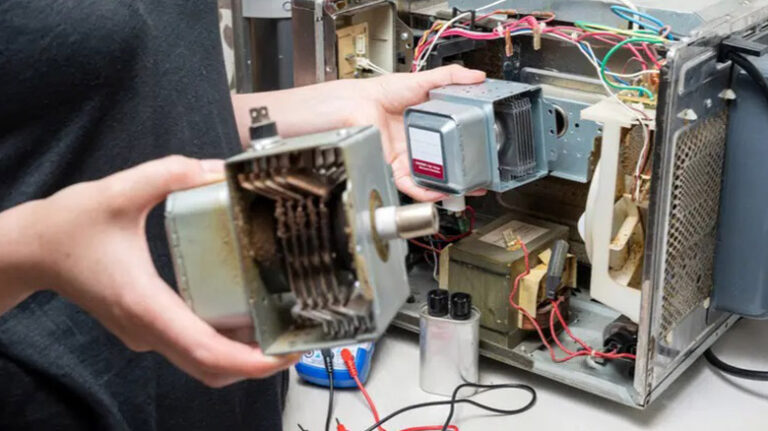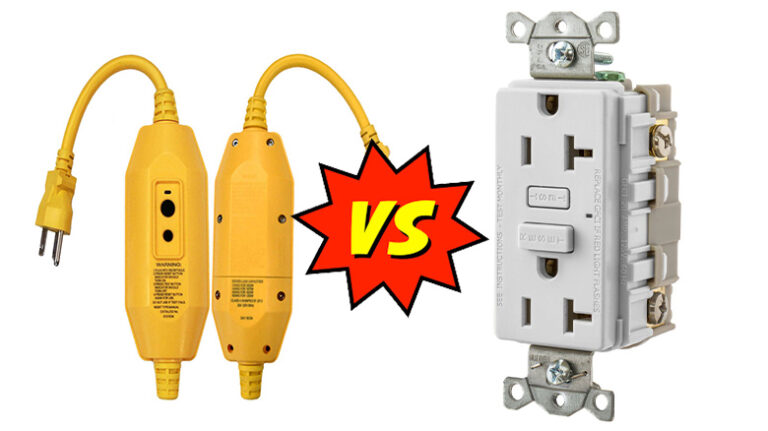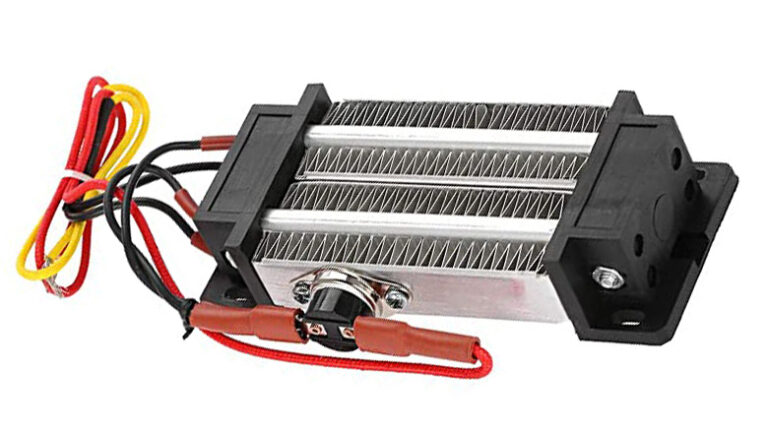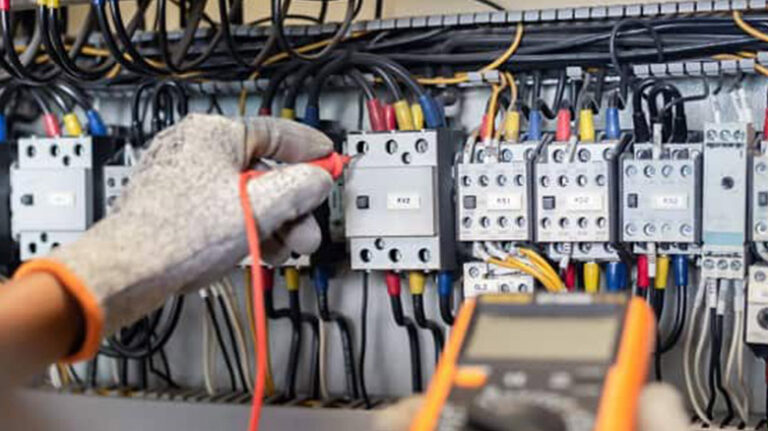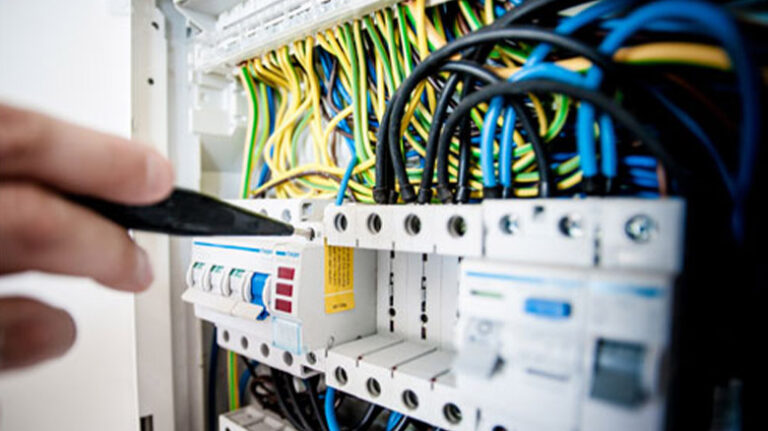How Do You Convert 240V AC to 240V DC? Explained
The transformation of alternating current (AC) to direct current (DC) is of the highest importance in the field of electrical engineering due to the various requirements of modern electronics and control systems.
One example of this conversion is going from 240V AC to 240V DC. This conversion process can be executed by some methods including rectification, capacitor filter, voltage regulator, etc.
Although it can appear like a straightforward process, it really comprises complex systems and components that permit a smooth transition from AC to DC power.
In this article, we will look at the strategies underlying this conversion.

Methods of Converting 240V AC to 240 DC
Electronic parts and circuits are utilized to convert and filter the 240V AC (Alternating Current) voltage before converting it to 240V DC (Direct Current). Here are some common strategies for performing this conversion:
Rectification
Rectification is the primary process included in converting AC electricity to DC. Rectifiers are modern devices that offer assistance in this transformation by permitting electricity to only flow in one way. The two fundamental types of rectifiers are half-wave rectifiers and full-wave rectifiers.
1. Half-Wave Rectification
A half-wave rectifier permits the positive half-cycles of the AC input voltage to flow through while blocking the negative half-cycles. Only the positive AC input half-cycles (240V) are allowed to pass through a diode in a half-wave rectifier, which produces pulsating DC (240V).
However, this type of rectification isn’t very effective because half of the input power is lost.
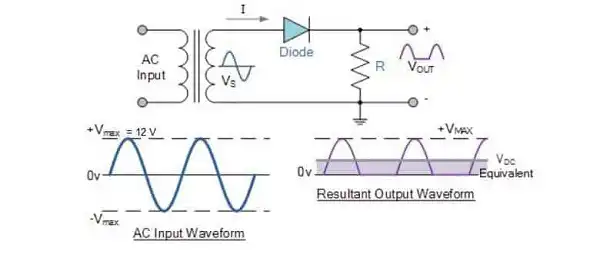
Image 1- Half Wave Rectifier
2. Full-Wave Rectification
Engineers utilize full-wave methods, such as the bridge rectifier with four diodes, to get around half-wave rectification’s limitations. It makes use of both AC halves and keeps up a steady current direction for a smoother DC output.
Full-wave rectification significantly decreases voltage ripples in comparison to half-wave rectification, improving stability and effectiveness.
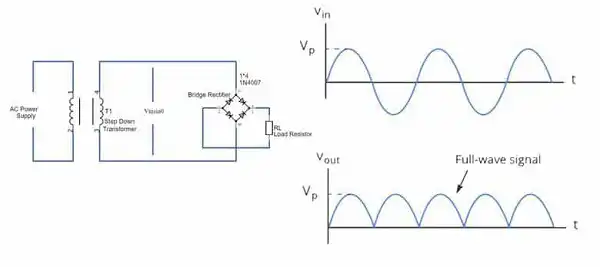
Image 2- Full Wave Rectifier
Capacitor Input Filter
The DC output still has ripples even after rectification. By applying a capacitor-input filter, these waves can be diminished to a minimum. By holding charge during the high voltage portions of the AC input cycle and discharging to supply current during the low voltage portions, the capacitor smooths the output.
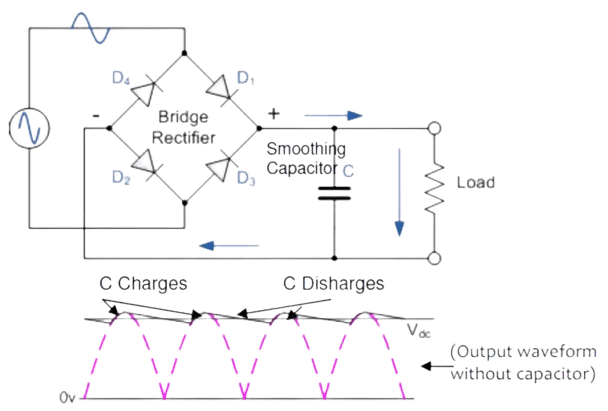
Image 3- Capacitor Input Filter
Voltage Regulator
If a precise and consistent DC voltage is required, a voltage regulator can be included in the circuit. There are two popular types of voltage regulators: switching voltage regulators, like buck converters, and linear voltage regulators, just like the LM7805.
These devices keep up a constant output voltage regardless of changes in input voltage or load.

Image 4- Voltage Regulator Circuit
Switching Power Supply
To convert from AC to DC, switching power supplies is a very effective technique. They work by quickly rectifying and filtering the output high-frequency AC voltage and rapidly turning on and off the input voltage at high frequencies. The filtered output is then regulated to get the necessary DC voltage level.
Following these techniques, 240V AC can be converted to 240V DC.
Frequently Asked Questions
Can the same process be used for different voltage levels?
Yes, the rectification and filtering process can convert AC to DC at varied voltage levels by appropriately adjusting component ratings. Precision, safety, and component compatibility are vital when adapting this strategy to satisfy diverse voltage requirements.
Why would someone want to convert 240V AC to 240V DC?
Direct current (DC) can be stored while alternating current (AC) cannot. So, in order to store electric energy, alternating current is converted to direct current. Digital devices utilize direct current for the same reason.
Are there differences between single-phase and three-phase AC to DC conversion?
Even though three-phase systems are more powerful and efficient for larger applications, the fundamental conversion principles are the same.
Conclusion
Although it seems simple, converting 240V AC to 240V DC is a challenging process. Rectification, smoothing, and regulation are strategies utilized by engineers to make steady DC power for electronics. Efficient conversion will be vital in determining the dependability and effectiveness of our electrified environment as technology develops.

